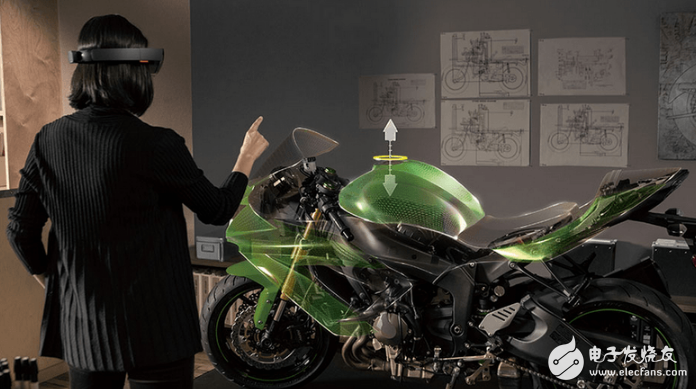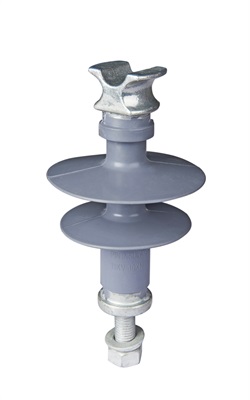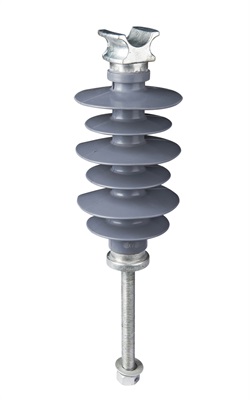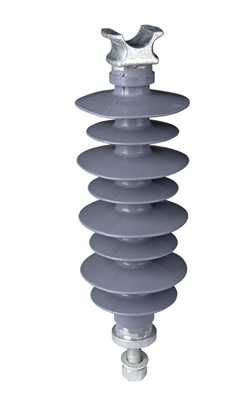I have seen a documentary about Chinese-made TV on TV, and I was impressed by the scene of making high-speed trains in the film. In the high-speed rail assembly workshop, more than 40,000 parts of each train need to be installed and commissioned. Most of the work needs to be done manually or semi-manually. The working skills of the workers are essential to ensure the quality of the final assembly. At that time, I was thinking about how these workers need to be trained to meet the high standards of work requirements, and how can they alleviate the burden on these workers.
Coincidentally, I participated in an augmented reality lecture. Mr. Su Bo, CEO of Shenzhen Augmented Reality Technology Co., Ltd. (formerly Qing Orange Vision Digital Technology Co., Ltd.) introduced the practical experience of AR technology in the industrial field, as the application of Chinese AR technology in the industrial field. The forerunner, the wonderful sharing of Su’s total makes me shine, can this solve the problem I think above?

Many people may have heard the fiery "AR, VR" in the past two years, but they don't necessarily know what they can do. Simply put, Augmented Reality (AR) technology can superimpose computer-generated images into the real world, while Virtual Reality (VR) technology can immerse you in virtual environments. Currently, AR focuses on enterprise applications such as manufacturing, maintenance, medical, military, etc.; VR focuses on consumer applications such as entertainment and games.
How can such a high-tech technology be combined with Industry 4.0? The author stands in the product perspective and takes AR as an example in the industrial field, and has made some thoughts from the application scenarios, target customers, and product model dimensions.
First, the application scenario
Whether any high-tech is popular is not how cool it is, but how much value it can bring to customers.
Industry itself is a huge industry, and the industry is actually a traditional industry. The era of China's low-cost labor costs to achieve large-scale industrial transfer has gone forever, and rising labor costs have become a reality. In order to upgrade the industry, the automation and informationization of Industry 4.0 is an inevitable trend.
Many people think that Industry 4.0 is a robot factory, but the author believes that improving efficiency and integrating the supply chain is the main goal of Industry 4.0, and people are an indispensable part of Industry 4.0. AR technology can help people solve the pain problems in their work, improve efficiency, reduce costs, and become one of the key technologies for industrial industry upgrading. In fact, many application scenarios have been shown in sci-fi movies. However, in reality, AR technology needs to be improved and improved. Some technical difficulties need to be overcome. At present, this process is accelerating.
At present, AR technology focuses on precision instrument manufacturing and maintenance, auxiliary teaching and training, medical research and anatomical training, military reconnaissance and combat command, rescue and disaster relief, etc. Several application scenarios are easy for everyone to understand.
1. Industrial assembly
In the production sites of large equipment such as ships, airplanes, trains, automobiles, machine tools, etc., there are a large number of workers with high professional skills. They have complicated operations, many steps, and are prone to omissions or duplications, resulting in safety hazards and high requirements for workers. .
If the worker wears AR glasses, according to the guidance of the holographic screen, the standardized operation can be seen, the next work step can be seen, the information of the equipment or items in front can be seen, and the work action route can be seen. Not only avoid mistakes, but also improve efficiency and shorten the training period for workers.
If workers encounter problems, wear AR glasses, and connect with experts remotely, experts can observe the situation from the worker's first perspective, and then understand the problem and guide the workers how to deal with it. Not only can the problem be handled immediately, but it also saves a lot of travel expenses without the need for experts to go to the site.
2, industrial maintenance
With more and more types of industrial equipment, more and more large-scale, and increasingly complex on-site environments, maintenance and maintenance have become an increasingly serious problem. Maintenance personnel should identify different brands/models/components, diagnose faults, use appropriate tools, replace corresponding components, and adopt targeted maintenance methods. It relies on a large amount of experience, low efficiency, high error rate, and requirements for maintenance personnel. Higher.
If the maintenance personnel wear AR glasses, after scanning the machine, you can know the product model and maintenance records of the equipment. You can directly download the equipment maintenance manual, display the specific operation steps to solve the equipment failure, and even how to disassemble the parts. Significantly reduce maintenance staff training costs and training cycles.
Through AR technology, remote collaboration and work guidance can be carried out, allowing back-end experts to see the first-time view of front-end maintenance personnel, providing efficient work instructions and guidance in real time, reducing human error, and inefficiency due to inexperience of field personnel. Waiting for the expert's time and other expenses, while improving work safety.
3, practical training
In the industrial field, there are a large number of workers who need operational training. The traditional training methods have limited effect, and the enterprises spend high training costs. However, there are always pains in the training that learners can't use the time and energy of the teaching staff.
If the worker wears AR glasses, the system guides all the standard steps, so that the learning scene and the work scene are infinitely close until they overlap, and the hands are freed, directly solving the problem of “cannot be used when learning, can not be used when learningâ€, greatly improving the user experience of training. .
4, first aid assistance
In medical emergency, there are many diseases that often need to race against time. If the emergency personnel on the ambulance wear AR glasses, the live emergency scene is given to the doctor at the back of the hospital. The hospital doctor guides the first aid to the first aid in real time, and allows the operator to prepare the surgical plan in advance through live broadcast, which will make the emergency process valuable. time.
5, medical teaching
The training from medical students to doctors not only requires a large theoretical foundation, but also requires practice accumulation, but the number of observations that can be accommodated in the operating room is limited, and too junior students entering the operating room may affect the operation, so if the doctor wears AR glasses For the live broadcast of the operation, the students can understand the first scene of the operation, and the contents can be recorded and analyzed after operation.
In addition, the live broadcast is convenient for multi-party consultation and cooperative operation. Some complex operations require multiple specialist consultations. No matter where the experts are, they can understand the progress of the operation and the details of the operation, and even communicate and guide the operation with the surgeon.
6, underwater rescue
Under water, the diver has a small angle of view and low visibility. If you wear AR glasses to identify the objects that the diver sees, you can let the diver know his position, can display the sonar image, or can still see the surrounding environment in an environment close to 0 visibility, which will be great for the diver. s help.
7, rescue and disaster relief
When a major accident occurs, professional command is crucial to on-site rescue. But often the incident is sudden, experts can not rush to the scene in the first time, easy to miss the golden time of rescue. The accident scene environment is unfamiliar and complicated, and it is impossible to understand the scene at the first time and affect the rescue efficiency.
If the firefighting and rescue personnel wear AR glasses, they can check the internal structure map of the building, the layout layout of the surrounding power grid and other information affecting the rescue work in real time, which can match the real environment of the site, accurately locate the best rescue route, select the best rescue means, and find The location of the fire hydrant recently facilitates the location confirmation and communication between the players, greatly improving the rescue efficiency.
AR technology can also remotely transmit complex accident scenes to the command center. The rescue experts can lay out the site work according to the actual scene, track the images returned from the scene, and release rescue commands in real time.
From the above application scenarios, AR technology has a broad application base. In fact, there are already many practical application cases, such as:
a. As early as the early 1990s, Boeing of the United States had applied AR technology to the connection of power cables and the assembly of connectors in aircraft manufacturing.
b. In 2003, Germany successfully developed the Starmate system and the Arvika system for industrial equipment assembly and maintenance. Later, the European Aeronautic Defense and Space Corporation (EADS) used the Arvika system to guide workers to easily complete high-density wiring work.
c. In 2016, Microsoft partnered with NASA on the "Sidekick" project. Astronaut Scott Kelly used HoloLens augmented reality equipment on the International Space Station for space station use and maintenance.
Polymer Pin Insulator is applied to high voltage power line to support conductor and insulate from ground. Polymer pin type insulator consists of a cylindrical solid insulating core that is subjected to mechanical loads and is protected by an elastomeric casing through which the load is transferred to the core. And composite pin insulator is used under 35kV distribution line. Since this pin composite suspension insulator has many advantages, now days many countries and areas more and more use this type insulator to displace porcelain or ceramic insulator.
Features
1. Lighter in weight, almost a 90% weight reduction. This weight reduction leads to easier handling, reduced shipping and installation costs2. Better performance in high contamination areas
3. Overall better handling of shock loads
4. More aesthetically pleasing the eye, and smaller profile
5. More resistant to vandalism and breakage due to the forgiving nature of polymer
6. Strong in tension
| MAIN DIMENSIONS AND STANDARD PARTICULARS | |||
| Type | 11KV 10KN | 24KV 8KN | 33KV 10KN |
| Rated Voltage,KV | 11 | 24 | 33 |
| Rated mechanical strength load,KN | 10 | 8 | 10 |
| Creepage distance,mm | 300 | 770 | 900 |
| Structure height,mm | 210 | 312±15 | 375±15 |
| Insulating distance,mm | 142 | 215 | 307 |
| Lightning impulse withstand voltage,KV | 95 | 170 | 200 |
| 1 min wet power frequency withstand voltage,KV | 38 | 75 | 90 |
| Standard | IEC61952 | IEC61952 | IEC61952 |



We warmly welcome friends both domestic and abroad to visit our company, if you have any questions, please contact with us directly.
Pin Type Insulator,Composite Pin Insulator,Composite Polymer Pin Insulator,Pin Composite Suspension Insulator
FUZHOU SINGREE IMP.& EXP.CO.,LTD. , https://www.cninsulators.com
